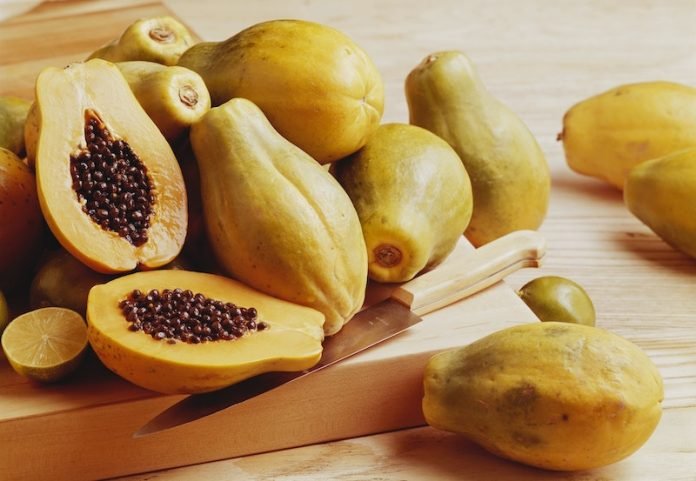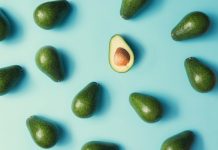
The fall harvests usher in loads of pumpkins into grocery stores. But a smooth-skinned tropical fruit also vies for a consumer’s attention: papaya.
The orange and green fruit is originally from Central America and southern Mexico, but papaya now grows in several tropical and subtropical countries, such as Brazil, the Philippines and Malaysia.
In the United States, papayas are grown in Hawaii and Florida. Harvests can peak in early summer or in the fall.
The papaya has a sweet, almost buttery or milky interior, which is why it’s known as lechosa or lechoza in some parts of Latin America.
The flesh can be yellow, orange or pinkish and, depending on the variety, papaya may have a slightly musky flavor.
The fruit has many nutrients, including vitamins A, C and E. Papaya contains antioxidants such as lycopene, which may reduce the risk of heart disease and stroke, and fiber, which research shows may help lower cholesterol.
It’s also high in potassium, which “can be really helpful for people who have high blood pressure,” said Alanna Cabrero, a registered dietitian in New York.
The nutritional content of papaya also aids in digestion, while being gentle on the belly.
The fruit from the Carica papaya plant is ripe when its dark green exterior turns yellow-orange.
Unripe papaya has long been used in folk medicine for things such as wound healing, and research shows the edible black seeds clustered in the center of the papaya have been used to eliminate intestinal parasites.
However, eating unripe papaya may cause allergic reactions in people with a latex allergy. The papaya latex inside the fruit contains papain, an enzyme that breaks down proteins, carbohydrates and fats.
Cabrero didn’t particularly care for the taste of papaya as a child. Now, she enjoys the fruit. Eating it brings fond memories of her late father. “It was my father’s favorite fruit,” she said.
Adding a splash of lemon or lime to a slice of papaya can tame the strong flavor in some varieties, Cabrero said.
You can also make a marinade with it by mixing papaya with soy sauce, a bit of lime and pepper. “It’s going to make the meat more tender and easier to digest,” she said.
The papaya’s texture also makes it a great ingredient for smoothies. “It can actually bring about that kind of banana thickness that smoothies have,” Cabrero said.
Papaya can be cut into cubes and frozen. When the mood strikes for a cool beverage, take the papaya out of the freezer, add other fruits and make a smoothie.
“It could be kind of fun if you combine it with some bananas, some pineapple and a little bit of mango,” Cabrero said, adding that it’s a kind of tropical feast for the palate that won’t disappoint.
Written by Lourdes Medrano.
If you care about nutrition, please read studies about how Mediterranean diet could protect your brain health, and the best time to take vitamins to prevent heart disease.
For more information about health, please see recent studies about plant nutrients that could help reduce high blood pressure, and these antioxidants could help reduce dementia risk.
Follow us on Twitter for more articles about this topic.



